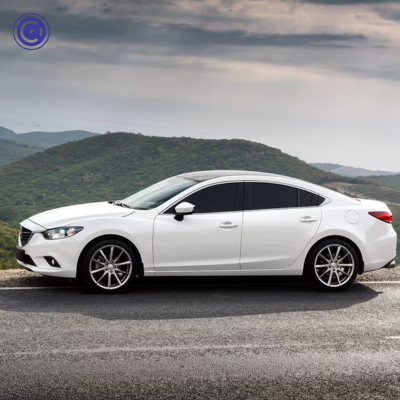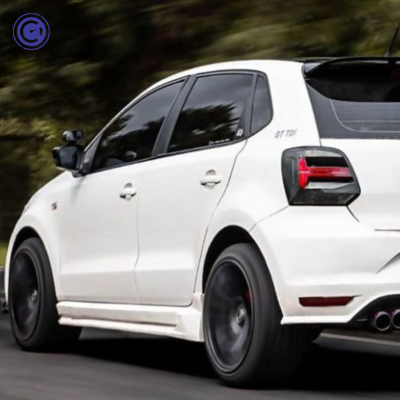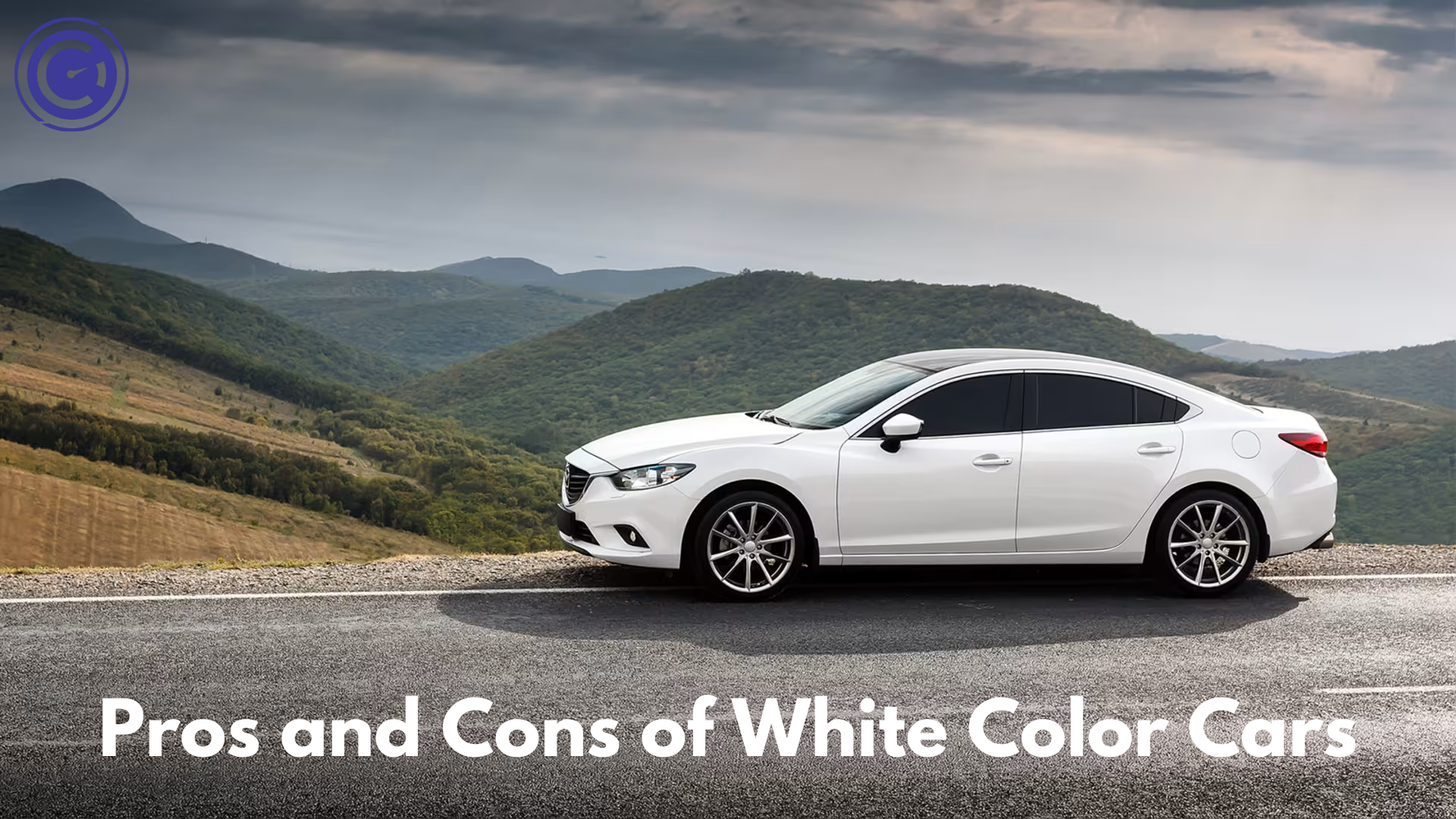Table of Contents
Introduction
When it comes to choosing the color of your next car, white is a popular choice that often stands out for its clean and sleek appearance. However, just like any other color, white comes with its own set of advantages and disadvantages. In this comprehensive guide, we will explore the pros and cons of white color cars, helping you make an informed decision before you commit to this classic automotive hue.
The Appeal of White Cars

Visual Aesthetics: The Timeless Elegance of White
White cars exude a sense of elegance and simplicity, making them a timeless choice in the automotive world. This color reflects purity and sophistication, often associated with luxury and high-class status. Its neutral palette makes it a versatile choice, complementing various designs and styles, from sports cars to family vehicles.
Popularity and Resale Value: Market Trends and Statistics
White has been a top choice for car buyers globally, often leading in popularity charts. This preference isn’t just about looks; it also translates into practical benefits. Cars in white tend to have higher resale values compared to their more vibrant counterparts. The demand for white cars in the used car market often means you can expect a better return on your investment when it’s time to sell.
Pros of White Color Cars

Heat Reflection: Staying Cool in Summer Months
One of the significant advantages of owning a white car is its ability to reflect sunlight. Unlike darker colors that absorb heat, white minimizes heat retention, keeping the car’s interior cooler during hot summer months. This natural heat resistance can contribute to a more comfortable driving experience and potentially reduce the need for constant air conditioning, saving fuel in the process.
Visibility and Safety: A Safer Choice on the Road
Safety is a paramount concern for every driver, and white cars offer an advantage in this aspect. Their high visibility, especially during daylight, makes them easier to spot on the road, reducing the risk of accidents. Studies have suggested that white cars are less likely to be involved in collisions, attributing this to their conspicuous nature against the asphalt.
Cons of White Color Cars

Maintenance and Cleaning: The Challenge of Keeping It Clean
While white cars are stunning when clean, they require more frequent washing to maintain their pristine appearance. Dirt, dust, and road grime are more visible on a white surface, demanding regular cleaning efforts. For those living in areas with heavy pollution or dusty conditions, this can translate into an additional chore and expense.
Commonality: Lack of Uniqueness
The popularity of white can be a double-edged sword. While it’s a safe and classic choice, it also means that your vehicle won’t stand out much in a sea of white cars. For those seeking individuality and uniqueness, white might not be the ideal choice.
Practical Considerations
Cost of Ownership: Insurance and Maintenance Insights
Owning a white car can influence your cost of ownership in various ways. Insurance companies often consider car color when determining premiums, although the impact is usually minimal. However, the cost of maintaining that spotless white appearance can add up, especially if you opt for professional cleaning services.
Durability: Paint Longevity and Protection
White paint is known for its durability and resistance to fading. Unlike darker colors that can show signs of aging more quickly due to UV exposure, white maintains its brightness for a longer time. However, it’s still crucial to protect your car’s paint with regular waxing and protective coatings to ensure it stays in top condition.
Psychological Impact

Perception and Stereotypes: Public Views on White Cars
White cars often carry certain stereotypes and perceptions. They are frequently associated with cleanliness, simplicity, and efficiency. In some cultures, white is seen as a symbol of peace and purity. These perceptions can subtly influence how others view you and your vehicle on the road.
Emotional Influence: How Color Affects Mood and Decision
The color of your car can also have a psychological impact on your mood and decision-making. White is considered a calm and peaceful color, potentially offering a serene driving experience. It’s believed to encourage clear thinking and reflect a straightforward, no-nonsense approach to life.
Environmental Factors
Climate Suitability: Best Geographical Locations for White Cars
White cars are particularly well-suited to regions with hot, sunny climates. Their reflective properties make them an ideal choice in areas where minimizing heat absorption is a priority. However, in locations prone to heavy snow, white cars can blend in with the surroundings, potentially affecting visibility.
Dirt Visibility: Managing in Urban Environments
In urban areas with high pollution levels or where roads are frequently wet and muddy, white cars may require extra attention. The visibility of dirt and stains means owners need to be proactive in maintaining their car’s appearance to keep it looking its best.
Customization and Style

Personalization: Making Your White Car Stand Out
While white is a common color, there are numerous ways to personalize your vehicle to make it unique. Options include custom rims, tinted windows, and unique interior detailing. These additions can transform a standard white car into a standout personal statement.
Accessory Compatibility: Enhancing Aesthetics with Add-ons
White cars offer a blank canvas for accessories and modifications. Whether it’s sporty decals, elegant chrome accents, or modern LED lighting, the neutral backdrop of white enhances the visual impact of any add-on, allowing owners to tailor their cars to their tastes.
Financial Aspects
Depreciation Rate: How White Affects Car Value Over Time
The color of your car can influence its depreciation rate. White cars often fare better in retaining their value due to their enduring popularity and timeless appeal. This can be a significant factor when considering the long-term financial implications of your car purchase.
Insurance Implications: Cost Differences by Color
While the color of your car is not a major factor in determining insurance premiums, it can play a minor role. Insurers may consider the visibility and popularity of white cars when calculating rates, potentially offering more favorable terms compared to less visible or less popular colors.
Safety and Visibility
Accident Statistics: Safety Records of White Cars
Safety is a crucial consideration for any car buyer. Statistics show that white cars tend to have a lower accident rate compared to darker colors. This can be attributed to their high visibility, making them easier for other drivers and pedestrians to spot.
Night Visibility: Pros and Cons During Different Times of Day
While white cars are highly visible during the day, their visibility advantage diminishes at night. Reflective trims and proper lighting are essential for maintaining visibility during nighttime driving, ensuring that the safety benefits of white cars extend to all hours.
Cleaning and Maintenance
Best Practices: Tips for Pristine Maintenance
Maintaining a white car requires diligence and the right techniques. From choosing the correct cleaning products to understanding the best methods for stain removal, knowing the ins and outs of white car maintenance can keep your vehicle looking its best for years to come.
Professional Services: When to Seek Expert Care
Sometimes, professional care is necessary to maintain the appearance of your white car. Whether it’s dealing with stubborn stains or applying protective coatings, professional services can provide the expertise and equipment needed to preserve your car’s pristine condition.
Color Psychology
Psychological Effects: How White Influences Perception
The psychology of color is a fascinating aspect of car ownership. White, often associated with cleanliness and purity, can influence how others perceive you and your vehicle. Understanding the psychological effects of white can add another layer to your decision-making process when choosing a car color.
Cultural Significance: Global Perceptions of White
The cultural significance of color varies around the world. In some cultures, white is associated with purity and new beginnings, while in others, it may have different connotations. Being aware of these cultural nuances can be particularly important for those who travel or live in diverse communities.
Conclusion
Choosing the color of your car is a significant decision that goes beyond aesthetics. White cars offer a blend of elegance, practical benefits, and challenges. By considering the pros and cons outlined in this guide, you can make an informed decision that aligns with your preferences, lifestyle, and needs. Whether you prioritize style, safety, or maintenance, understanding the nuances of white color cars will ensure that your choice brings satisfaction for years to come.

